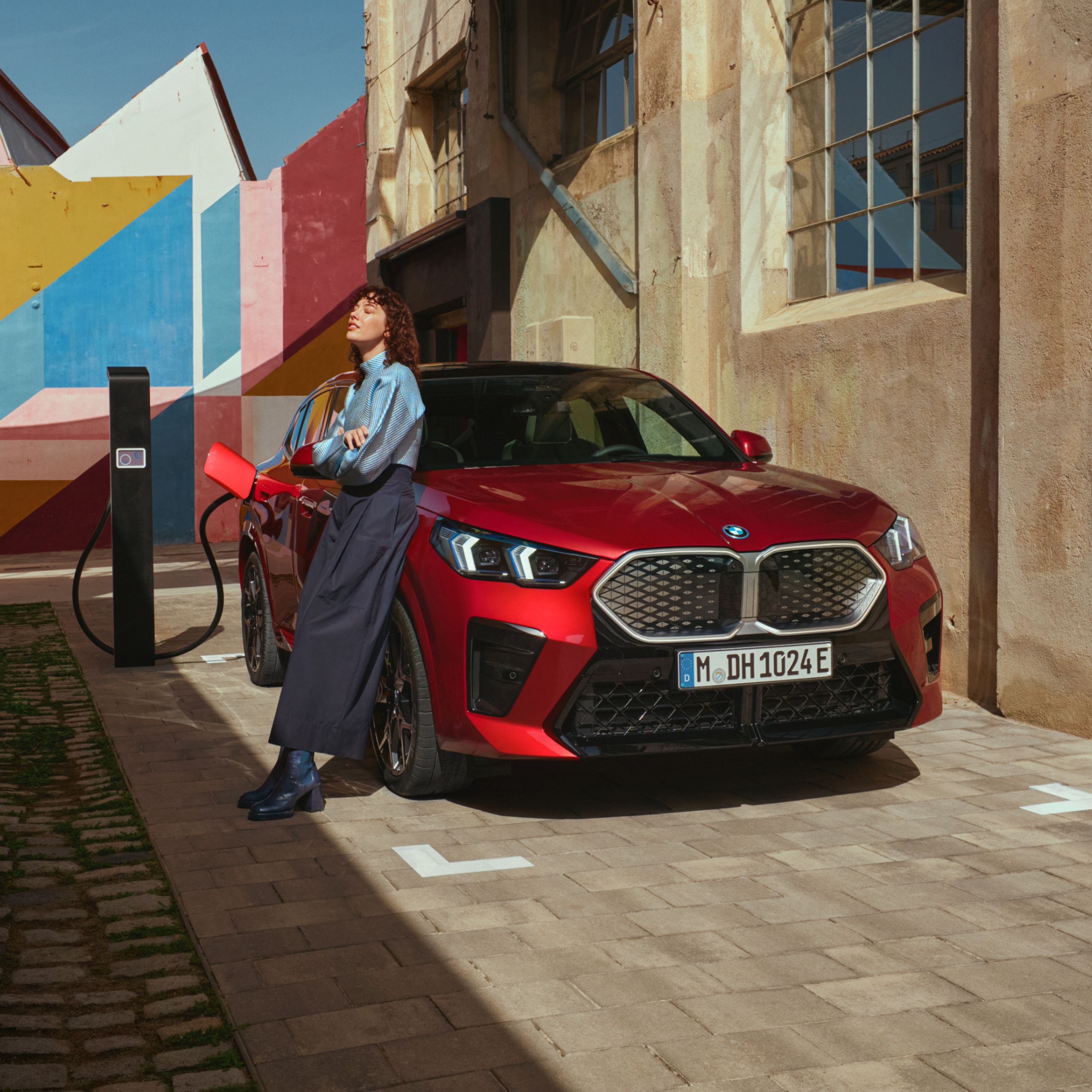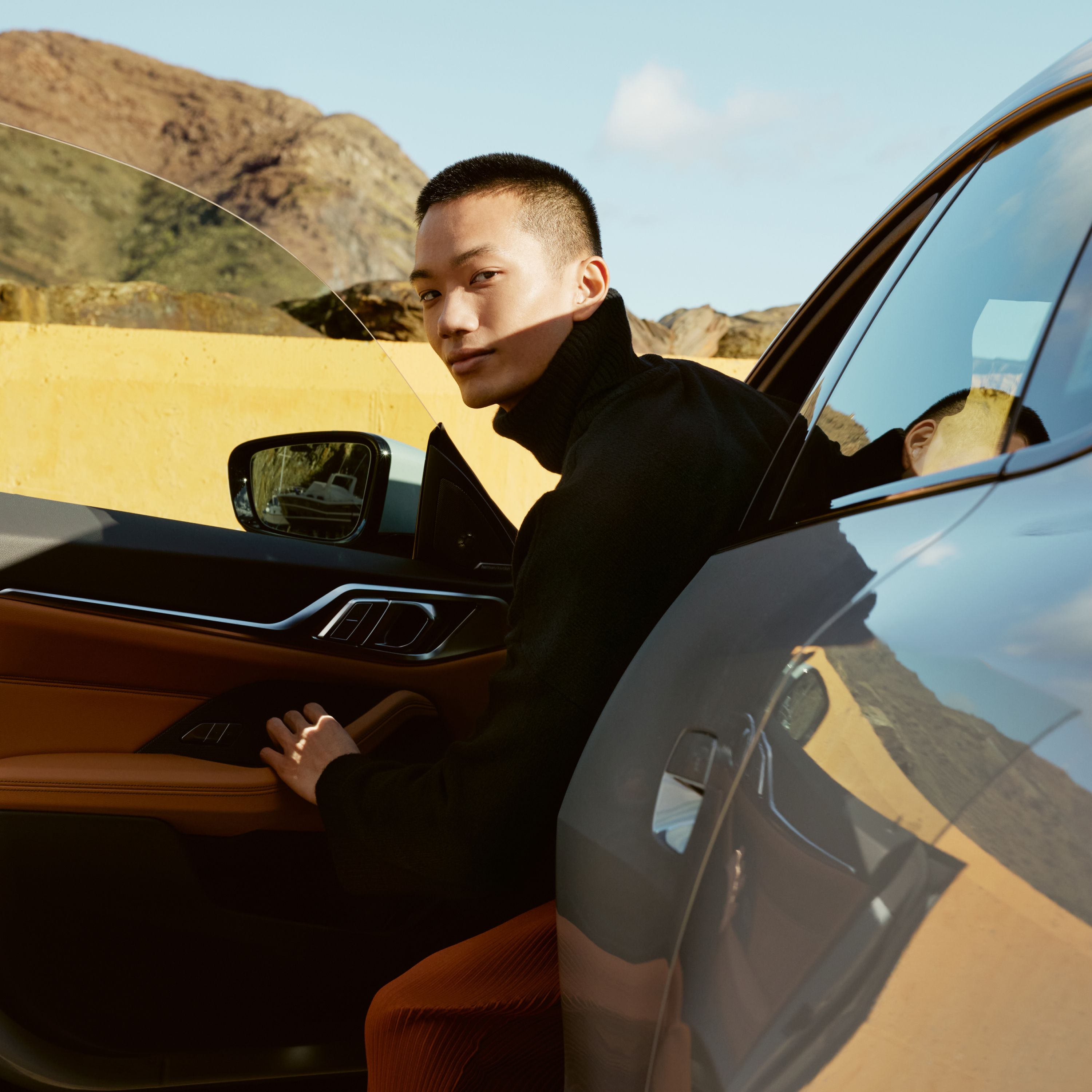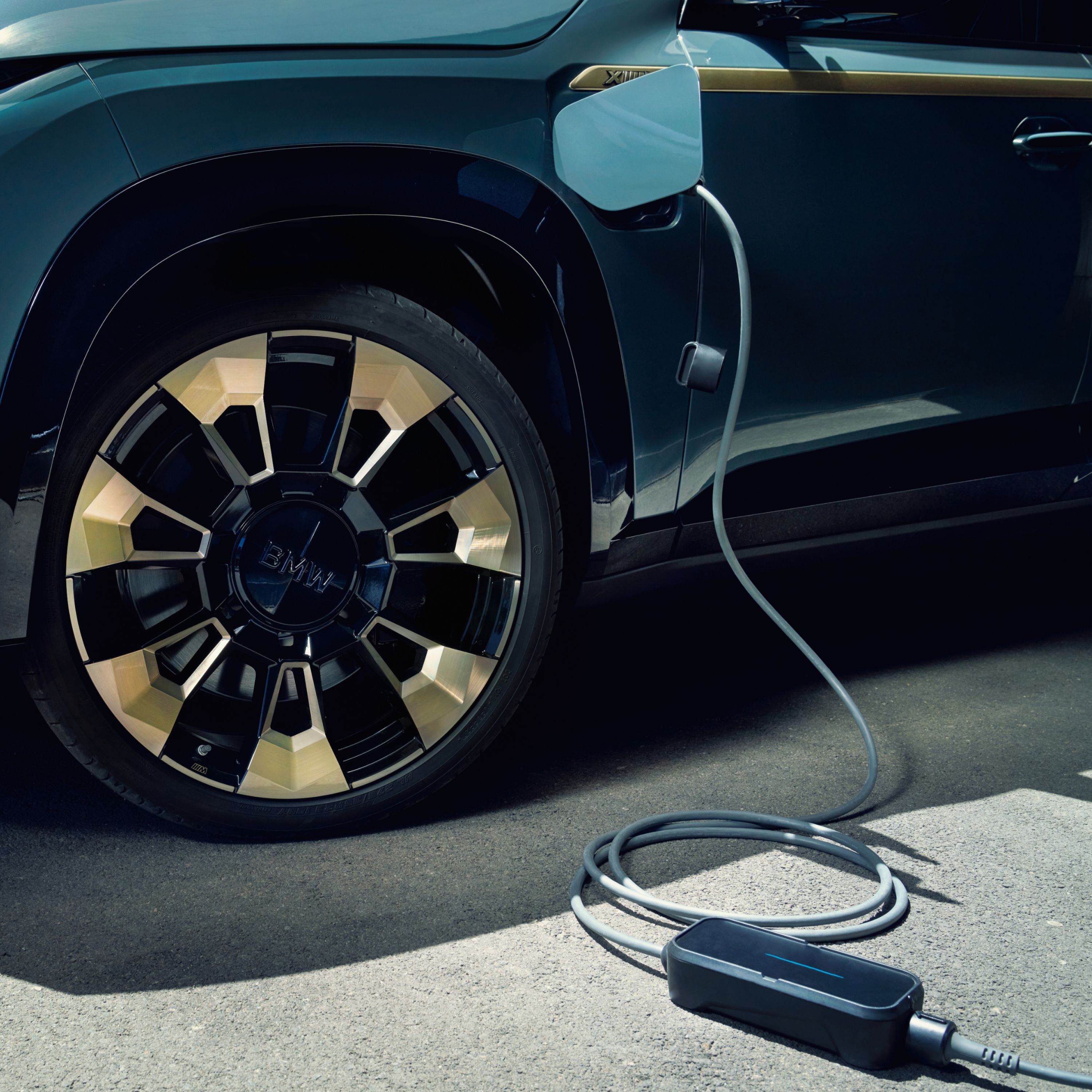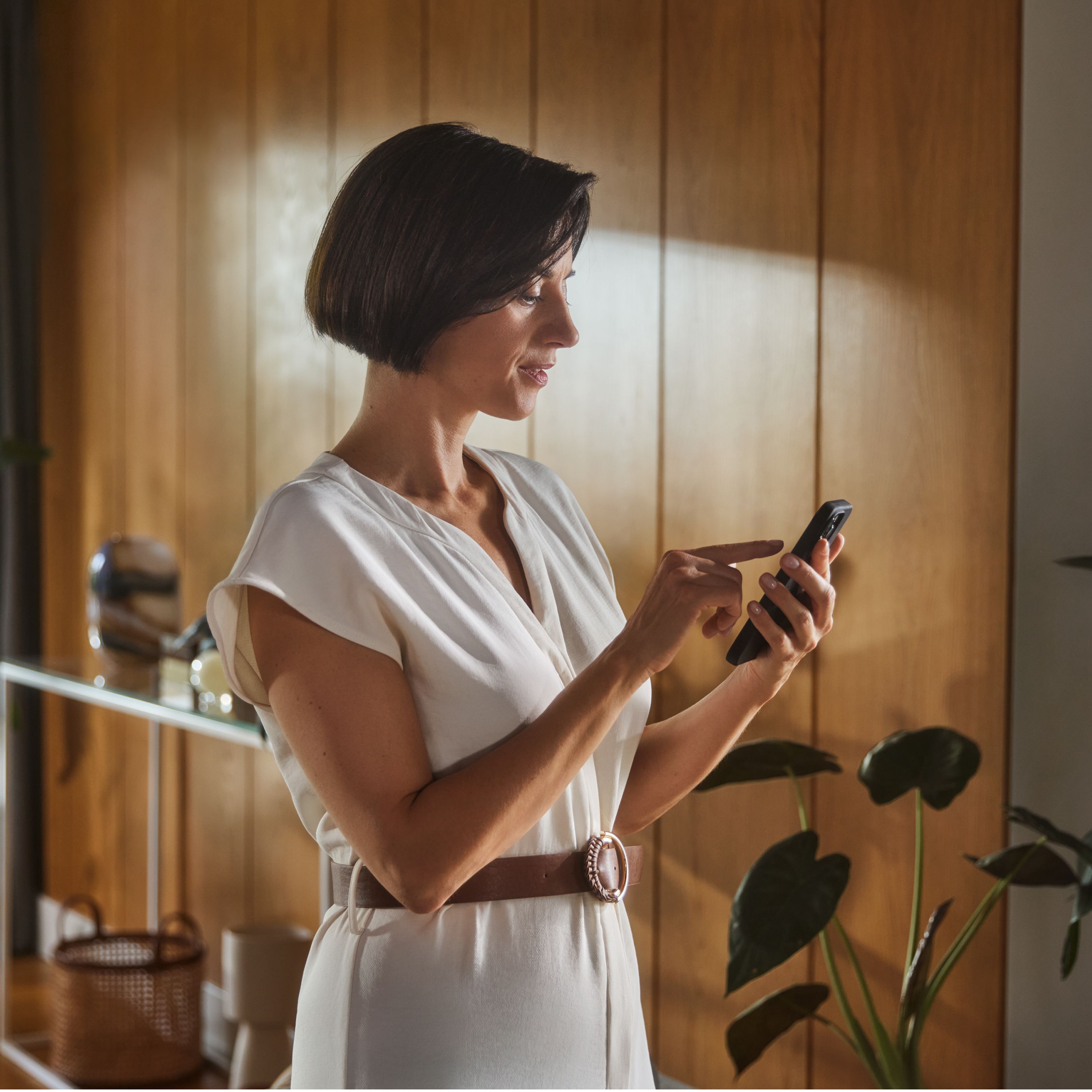THE BENEFITS
OF CHARGING AT HOME.

CHARGE OVERNIGHT.
Start your day with a full charge. Conveniently charge overnight with a home charger.

CHARGE SAFELY AND RELIABLY.
The home charger and optional BMW Flexible Charging Cable have been specifically designed for charging at home safely.
HOW TO CHARGE YOUR ELECTRIC CAR AT HOME.
There are multiple options for charging your BMW Electric Car or BMW Plug-in Hybrid at home. Charge at a regular 3-pin socket with the optional BMW Flexible Charging Cable. The optional Flexible Charging Cable can also be used at industrial sockets with a maximum power of up to 11 kW with a suitable adapter cable sold separately. Alternatively, the Solo 3 Smart Home Charger provided by PodPoint, BMW Group UK's preferred home charging supplier, also offers a charging solution for your home. from £899. Contact your preferred BMW installation partner for more information here.
CHARGING SOLUTIONS FOR YOUR HOME.
ALL ABOUT ELECTROMOBILITY.
ELECTRIC CAR PRICE COMPARISON.


[1] Battery electric vehicles require mains electricity for charging. Whilst we recommend the battery for this vehicle is charged to 80% to help optimise the life of your battery, the electric range figure shown is the WLTP figure after the battery had been fully charged to 100%. WLTP figures are shown for comparability purposes. Only compare fuel consumption, CO2 and electric range figures with other cars tested to the same technical procedures. These figures may not reflect real life driving results, which will depend upon a number of factors including the starting charge of the battery, accessories fitted (post-registration), variations in weather, driving styles and vehicle load.
[2] The charging performance depends on the state of charge, ambient temperature, individual driving profile and use of auxiliary consumers. The ranges shown are based on the WLTP best case. The charging times apply to ambient temperatures of 23 degrees Celsius after a preceding drive and may differ depending on the usage behaviour.
[3] This is at an ultra-rapid DC public charging station (150kW+). Ultra-rapid public charging stations are currently available in limited numbers in the UK, most commonly found in high traffic areas such as motorway service stations. Availability continues to grow and more information of charger locations and type can be found at: BMW Charging. Most charging stations have lower power ratings and charging times will be slower. The charging times shown were achieved under optimum testing conditions with a new battery and an ambient temperature of 23 °C following a prior journey. Actual times may be longer and depend on a number of factors, such as starting charge level, ambient temperature, age and condition of the battery, use of auxiliary devices, charging point capacity as well as individual driving style. Use of AC charging stations for your regular charging and less frequent use of DC fast charging stations will help optimise the health and life of your battery.
FREQUENTLY ASKED QUESTIONS.

ALTERNATIVELY, CHARGE ON THE GO.
Peace of mind on the move. Public charging stations are a good alternative to charging at home. Now widely available, they offer different levels of charging power. Get to your destination stress-free with routes optimised for charging. Simply use the navigation system or the My BMW App to find your nearest charging stations.
MORE INFORMATION.

TEST DRIVE THE BMW MODEL OF
YOUR CHOICE.
Would you like to experience for yourself how your ideal electric model drives and feels? Simply arrange an online appointment for a test drive when it suits you. Your local BMW Centre will contact you with all the information you need.

WOULD YOU LIKE A PERSONAL CONSULTATION?
Please contact your local BMW Centre with any questions or for more information or a quotation. Our professional BMW service personnel will be happy to advise you by phone or in person.

BMW CUSTOMER SUPPORT.
BMW Customer Support is on hand to help you with all BMW related issues – so that you get answers to all your questions: whether you're an existing BMW driver or are planning to purchase a new BMW.

BMW ONLINE GENIUS CAN HELP.
Still got questions? The BMW Online Genius has all the answers. Find all the answers to the most frequently asked questions. Simply type in your questions or browse by category.
Important information and disclaimers.
[1] Battery electric vehicles require mains electricity for charging. Whilst we recommend the battery for this vehicle is charged to 80% to help optimise the life of your battery, the electric range figure shown is the WLTP figure after the battery had been fully charged to 100%. WLTP figures are shown for comparability purposes. Only compare fuel consumption, CO2 and electric range figures with other cars tested to the same technical procedures. These figures may not reflect real life driving results, which will depend upon a number of factors including the starting charge of the battery, accessories fitted (post-registration), variations in weather, driving styles and vehicle load.
[2] The charging performance depends on the state of charge, ambient temperature, individual driving profile and use of auxiliary consumers. The ranges shown are based on the WLTP best case. The charging times apply to ambient temperatures of 23 degrees Celsius after a preceding drive and may differ depending on the usage behaviour.
[3] This is at an ultra-rapid DC public charging station (150kW+). Ultra-rapid public charging stations are currently available in limited numbers in the UK, most commonly found in high traffic areas such as motorway service stations. Availability continues to grow and more information of charger locations and type can be found at: BMW Charging. Most charging stations have lower power ratings and charging times will be slower. The charging times shown were achieved under optimum testing conditions with a new battery and an ambient temperature of 23 °C following a prior journey. Actual times may be longer and depend on a number of factors, such as starting charge level, ambient temperature, age and condition of the battery, use of auxiliary devices, charging point capacity as well as individual driving style. Use of AC charging stations for your regular charging and less frequent use of DC fast charging stations will help optimise the health and life of your battery.








